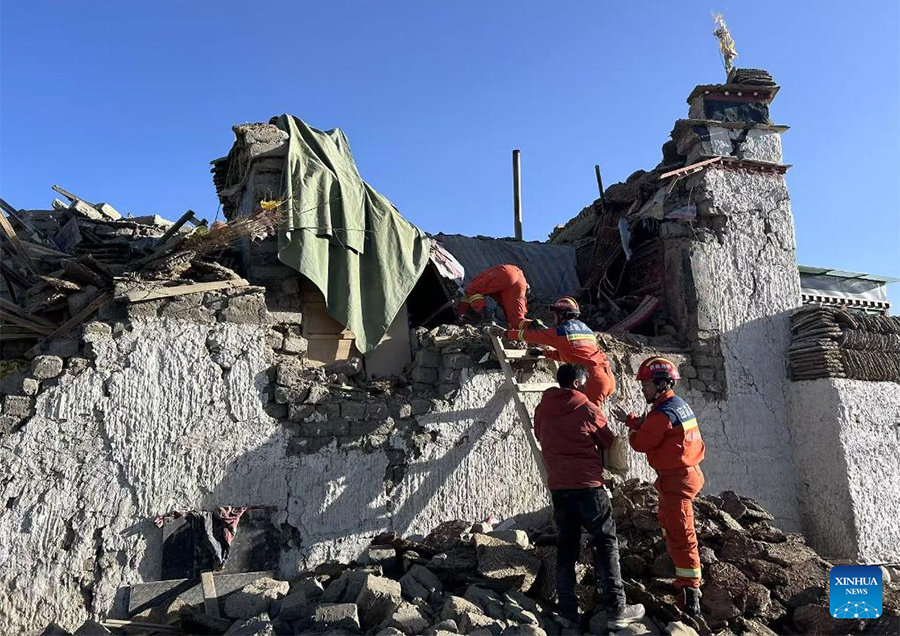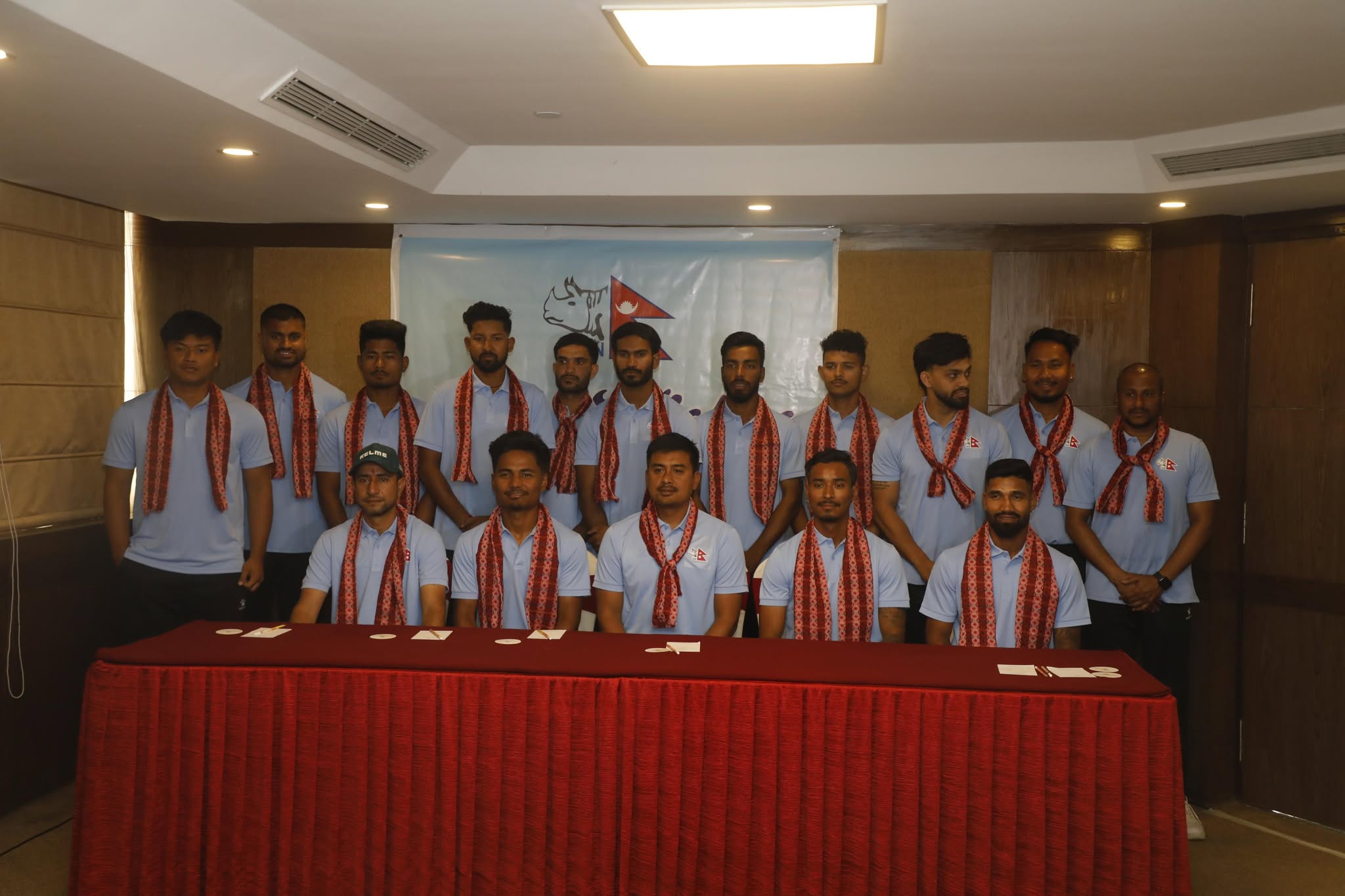
Together with young students, Sophie Kemkhadze, UNDP Deputy Country Director in Nepal (Programme), was instrumental in the development of a debris management system, an app designed in the aftermath of mega quakes that hit Nepal on April 25 and May 12, 2015.
The app, probably the first of its kind in the world, is meant to facilitate the purchase and sale of second-hand construction materials salvaged from houses and other structures destroyed or damaged in quakes.
That is not the only project in which the UNDP is involved in Nepal. Working together with Microsoft Innovation Center, UNDP created an Idea Factory that brought micro-entrepreneurs from Parbat and young students together for the development of a mobile phone-based app that will help the micro-entrepreneurs take their products to the global level. By reducing the role of middlemen, the app aims to bring maximum benefit to these microentrepreneurs.
In this context, Onlinekhabar caught up with Kemkhadze to talk about innovation and development in Nepal. Excerpts from the interview:
Why is there so much stress on innovation in Nepal?
We are part of the world. The world is changing around us, so we also have to follow it. Whatever tools and instruments technology were in use in the 19th century, you are not using them in the 20th century. People do not want to use the tools and instruments in use in the 20th century in the 21st century. If technology offers you novelty, if it offers you improved way of doing business, improved way of communication, improved way of reaching out, then why we should not be using technology that is already available around us?
You have your way of doing business and you try to follow it. Changing it means moving away from your routine. It’s hard. Because it means instead of going through the tried and tested path, you have to give extra thought, you have to convince people around you, have to find different ways to make things work.
It’s uncharted territory for many people.
It is, of course. The private sector is much more flexible in this regard. It is crazy about using technology in everything. The message is: Business as usual is no longer sufficient to do whatever we want to do. With conventional tools, you can go, may be, five metres. With innovative tools, you can go five kilometres.
The question is: What do you want to do? Whether you want to accept innovation as a way of doing business and reach to much larger audience, to gain efficiency or you want to play within your comfort zone, and then slowly slowly deliver whatever you were delivering yesterday or the day before yesterday.
But whole lot of farmers in Nepal are second-generation farmers, probably in their sixties. Can they adapt to this new thing, the new wave like mobile-phone-based apps? Can they adapt to the changing world out there? How do you encourage these people to switch to new technology?
In Parbat, for example, farmers are switching to new technology. You have to nurture the use of innovative technology at all levels, you have to work. Change is difficult at all levels, let’s agree on it. As a development organisation, our role is to hand-hold people and to walk them through the path where they will eventually change the way they do business.
Take the farmers of Parbat. The mobile penetration rate in Nepal is quite high. Take weather forecast. If you teach a farmer to check weather forecast on a daily basis, it will become his culture and he will not be doing agricultural work on an ad-hoc basis.
If rain is expected tomorrow, he will not use the pesticides, knowing that if rain comes, the effect of pesticides used will be close to zero. If he checks weather forecast and comes to know there’s no rainfall expected, then he can safely use pesticides.
These are small, small things that can nurture the use of innovative technology to connect to a bigger network. No, we do not have an illusion that hundred per cent farmers will adopt technology. But we want to create a group of lead farmers or a group of champion farmers. You know how conservative farmers are. If they see anybody using this technology, they are like: If she is using it, I can use it too.
What are the factors that are inhibiting innovation in Nepal?
Honestly speaking, my experience so far with innovation in Nepal is very positive. I see immense opportunity in this country to use innovation at every field of development, public life or private life. The question is: How we bring it to those, who ultimately have to will use it. What also makes me very very optimistic is that this is a country of young people. They are technically very sound. You cannot ask everyone to be the master of IT, but people have to be smart enough to be able to use it. On the other hand, you also have to have enough people to be able to develop this application. It’s a good part of the story that you have such great students: You give half the work to them and they develop the whole set of applications.You can use innovation everywhere. At every field, every walk of life, private or public, people in Nepal can use innovative technology.
Let’s talk, for example, about development of innovative technology for Parbat’s micro-entrepreneurs. Parbat has a different topography and different challenges, while most of the app developers are from Kathmandu. Will it not be good enough to nurture IT personnel from Parbat so they can cater to local needs in the best way?
I agree, absolutely. On the other hand, you have to start from somewhere. So, the whole idea of this project is that people try and test ideas and see how far they can go with it. Let’s see how this works. I am sure Parbat itself can offer resource for developing applications. But again, this has to be nurtured and this has to be found. Parbat is not the only district where we are working on development of innovative technology.
On other occasions, we are trying to bring students from across the country. For instance, when we did reconstruction appathon and now human rights ideathon, we brought students from all over the country, from all parts of the country. In 80 different geographical locations, there will be boot camps — special training — for the students. They will be taught IT for development of applications.
You are right. In a sense, this divide exists, but you have to try to bridge it. You have to start from somewhere. You have to bring people from different geographical locations together and help them address challenges facing people in these locations.
How has UNDP’s experience on innovation been in Nepal? How do you sum it up?
Let me just start from UNDP globally, in general. Innovation is a big ambition for UNDP. We really think we are champions in using innovation in development, does not matter whether you are in Nepal, you are in the Asia-Pacific Region or in any other part of the world. We are pushing this agenda globally. Here in Nepal, we are so far very much enthusiastic and very much optimistic and happy with the start that we had this year. We see there’s a huge potential for expanding innovation to cover more and more areas.
Now about the Idea Factory, where people’s ideas are tapped to serve local needs. What is the idea behind it? How do you tap the innovative potential of individuals for fighting disasters in a country that is known for high seismic activity as we saw during April 25 and May 12 mega quakes?
When we are talking about innovation, the point I want to make here is that it is not a one-way process. It is not the UNDP speaking to somebody else, but it is also the case of UNDP being able to get ideas from somebody else. You go to the communities. We want to talk to people, we want to get their ideas, we want to help them nurture their ideas. But in practical terms, it will be difficult to go individually and cover thousands of people. Again, innovative technology has helped you establish this linkage.
People can easily communicate to you and you can easily spread your message to people. There is so much wisdom and great ideas accumulated in people. But, somehow, this communication channel fails to absorb everything. The ideal scenario is that you tap locally accumulated knowledge, wisdom and then help develop it further so that this idea works and brings improvement in income, living standards. So, the Idea Factory helps people generate ideas and develop them further.
Do you think Nepal government’s policies are encouraging innovation? Is the education system encouraging or inhibiting innovation?
I think we have to accept the fact that innovation is becoming a part of the way you think, part of the way you do business, etc. Just one example: The Electronic Building Permit System. It is a huge step forward. It took some time to develop the system and convince government counterparts to use it. But it is up and running, and it is working. You have to have champions, you have to have first successful examples. The permit system, I think, is a part of the answer to your question. The government is also ready to accept it (innovation).
At the end of the day, there’s no other way to approach it – innovation — but to accept it.




















